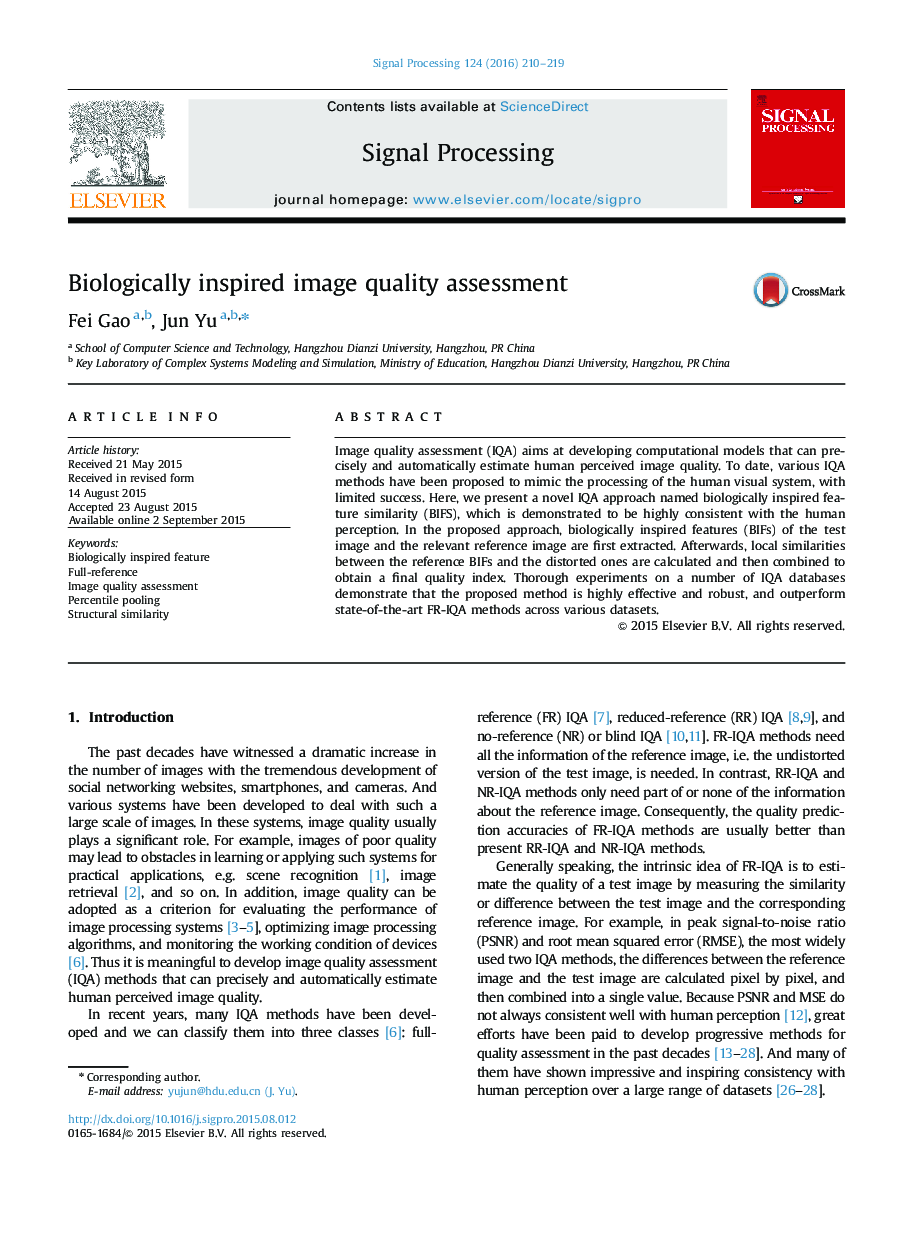| کد مقاله | کد نشریه | سال انتشار | مقاله انگلیسی | نسخه تمام متن |
|---|---|---|---|---|
| 562245 | 1451943 | 2016 | 10 صفحه PDF | دانلود رایگان |
• We propose a novel IQA approach named biologically inspired feature similarity (BIFS), which is demonstrated to be highly consistent with the human perception.
• In the proposed approach, biologically inspired features (BIFs) of the test image and the relevant reference image are first extracted.
• Afterwards, local similarities between the reference BIFs and the distorted ones are calculated and then combined to obtain a final quality index.
• Thorough experiments on a number of IQA databases demonstrate that the proposed method is highly effective and robust, and outperform state-of-the-art FR-IQA methods across various datasets.
Image quality assessment (IQA) aims at developing computational models that can precisely and automatically estimate human perceived image quality. To date, various IQA methods have been proposed to mimic the processing of the human visual system, with limited success. Here, we present a novel IQA approach named biologically inspired feature similarity (BIFS), which is demonstrated to be highly consistent with the human perception. In the proposed approach, biologically inspired features (BIFs) of the test image and the relevant reference image are first extracted. Afterwards, local similarities between the reference BIFs and the distorted ones are calculated and then combined to obtain a final quality index. Thorough experiments on a number of IQA databases demonstrate that the proposed method is highly effective and robust, and outperform state-of-the-art FR-IQA methods across various datasets.
Journal: Signal Processing - Volume 124, July 2016, Pages 210–219
